![]()
Creating a home that’s friendly for your pets is really important for both them and you. It means making a safe and comfy environment that meets all your furry friends’ needs. A pet-friendly home not only makes life better for your pets but also strengthens the bond between you and them.
In this blog post, we’ll look at 10 essential tips on how to make a pet-friendly home. We’ll cover things like pet-proofing your space, choosing the best flooring, providing comfy furniture, selecting pet-safe plants, managing pet hair, and more. These tips will help you make a happy and healthy home for your beloved pets.
How to Make a Pet Friendly Home to Make Your Pets Happy
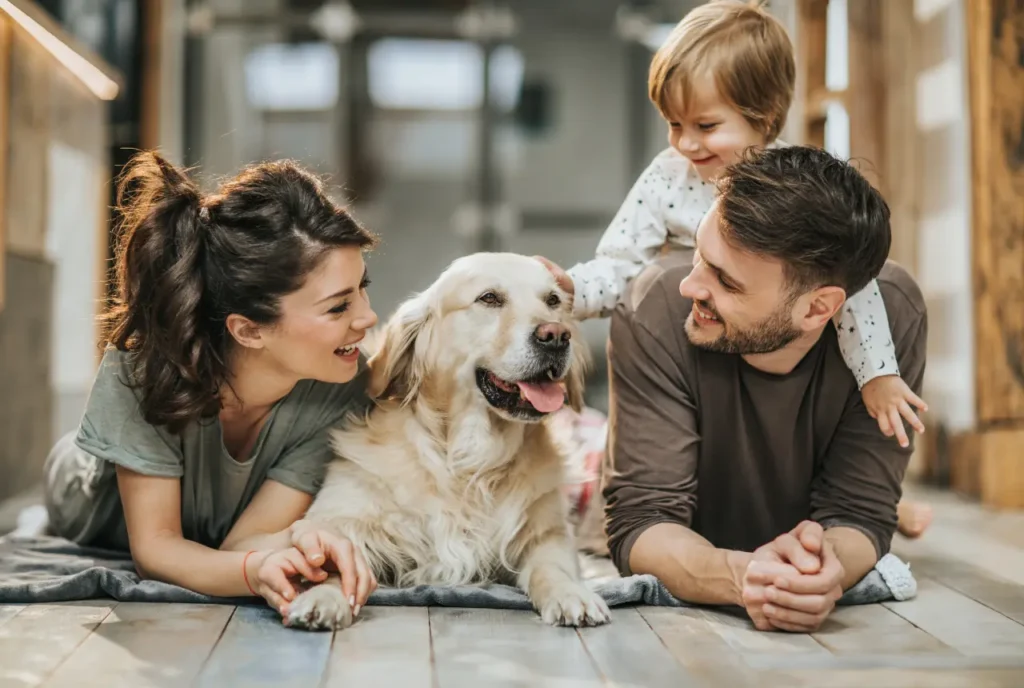
Making your home pet-friendly means tailoring it to meet your pet’s unique needs, ensuring they are safe, comfortable, and happy. A pet-friendly home typically features secure spaces, easy-to-clean surfaces, and dedicated areas for pets to play, rest, and eat. It’s essential to consider your pet’s specific needs, such as their species, breed, age, and activity level. For instance, an older dog might need soft bedding and easy access to their favorite spots, while a young cat would benefit from lots of climbing spaces and scratching posts.
Pet-proofing your home is a must for creating a safe environment. This means spotting and removing potential hazards like electrical cords, toxic plants, and small objects that could be swallowed. Use secure cabinets, install pet gates, and make sure outdoor spaces are fenced and free from harmful substances.
Creating a pet-friendly home doesn’t just benefit your pets; it also enhances your own well-being. Pet owners often feel less stressed, enjoy better mental health, and develop a stronger bond with their furry friends. A well-thought-out pet-friendly home ensures safety and comfort for your pets and fosters a happy, harmonious living space for everyone.
10 Essential Tips for a Happy Pet in a Pet-Friendly Home
1. Pet-Proofing Your Home
Pet-proofing your home is crucial to keep your furry friends safe and give you peace of mind. Here are some tips to help you identify and eliminate potential hazards so your pets can roam freely without getting into trouble. Pets, especially curious puppies and kittens, love to chew on electrical cords. Use cord protectors or hide cords behind furniture to prevent accidents.
Some common household plants like lilies, poinsettias, and philodendrons are toxic to pets. Keep these plants out of reach or switch them for pet-safe alternatives.
Keep small items like buttons, coins, and children’s toys off the floor and out of your pet’s reach to avoid choking hazards. For dogs, secure trash cans and store cleaning supplies and medications in high cabinets. Use baby gates to block off areas where you don’t want them to go.
For cats, keep breakable items and toxic plants out of their reach. Make sure window screens are secure and provide scratching posts to protect your furniture. Rabbits love to chew, so protect electrical cords and baseboards with covers and provide plenty of chew toys.
For outdoor spaces, secure gates and fencing are crucial to prevent pets from wandering off. Make sure fences are tall enough and check for any gaps they could squeeze through. Consult resources like the ASPCA’s list of toxic plants for more information on household items that can pose risks to pets.
By pet-proofing your home, you create a safe environment where your pets can play and explore freely without getting into harm’s way.
2. Choosing the Best Flooring for your Pet’s Comfort and Your Sanity

Creating a safe and secure environment for your pets is crucial for their safety and well-being. Pet-proofing involves identifying and eliminating potential hazards to prevent accidents and health issues. Here are some key steps:
Identifying Common Hazards
Electrical Cords: Curious pets might chew on these, leading to electric shocks or burns.
Toxic Plants: Plants like lilies and poinsettias can be harmful or even fatal if ingested by cats or dogs.
Small Objects: Items like buttons, coins, and children’s toys pose choking risks, especially for puppies and kittens.
For Dogs
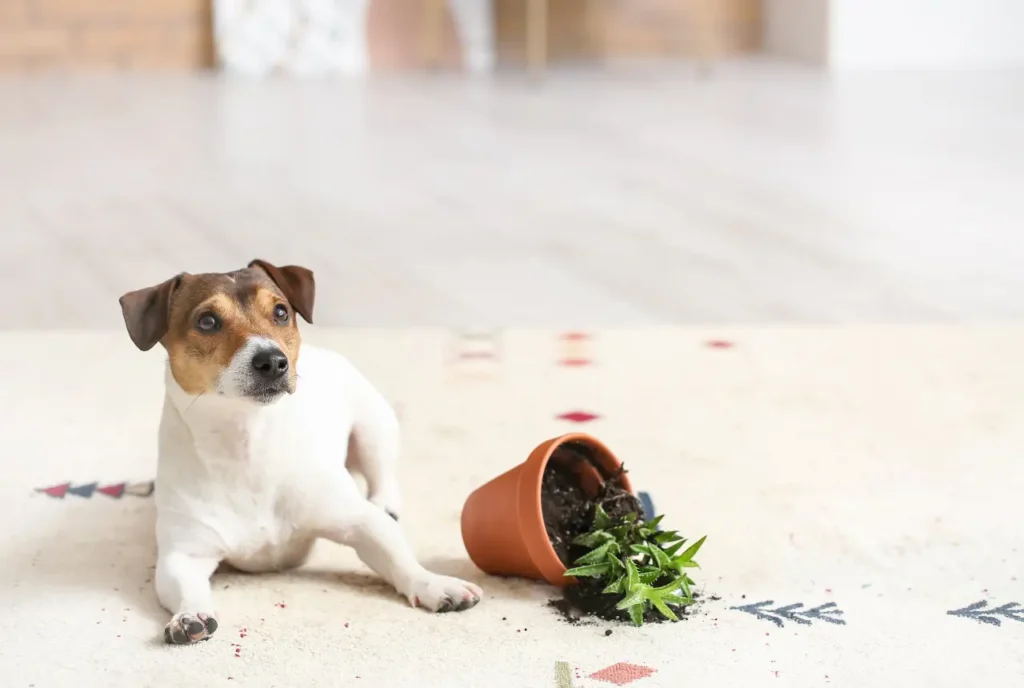
Secure Cabinets: Use childproof locks to keep cleaning supplies and medications out of reach.
Hide Electrical Cords: Cover them with cord protectors to prevent chewing.
Remove Toxic Plants: Keep harmful plants out of reach or replace them with pet-safe alternatives.
Install Baby Gates: Block off restricted areas like staircases or certain rooms.
For Cats

Secure Windows: Ensure windows have sturdy screens to prevent falls.
Clear Counters and Shelves: Keep breakable items and small objects off surfaces where cats might climb.
Provide Scratching Posts: These deter cats from scratching furniture.
Manage Toxic Plants: Place them out of reach or replace them with cat-safe options.
For Rabbits and Small Pets
Cover Electrical Cords: Use plastic tubing to prevent chewing.
Remove Small Objects: Clear any choking hazards from their reach.
Secure Enclosures: Ensure their living spaces are free from gaps where they might escape or get stuck.
Provide Chew Toys: Satisfy their natural chewing instincts.
Outdoor Spaces
Secure Fencing: Ensure gates and fencing are sturdy to prevent pets from wandering off or encountering dangerous wildlife.
Inspect Regularly: Check for hazardous plants and substances and remove them promptly.
By thoroughly pet-proofing your home, you create a safe haven for your pets, reducing the risk of accidents and giving you peace of mind.
3. Creating Comfortable Furniture for Your Pet

Choosing Pet-Friendly Furniture Materials
Leather Alternatives: Faux leather is easy to clean and resistant to scratches, making it a great option for homes with pets.
Stain-Resistant Fabrics: Fabrics like microfiber or Crypton are excellent for repelling spills and preventing odors.
Offering a Variety of Pet Beds
Different Types of Beds: Provide both soft, cushioned beds and firm, orthopedic options to accommodate your pet’s sleeping preferences.
Multiple Locations: Place beds in various spots around your home to give your pet cozy places to nap and feel secure.
Enrichment Toys and Puzzles
Mental and Physical Stimulation: Enrichment toys help prevent boredom, reduce anxiety, and promote healthy activity levels.
Types of Toys: Puzzle feeders, interactive toys, and treat-dispensing toys challenge your pet’s mind and keep them engaged.
Scratching Posts for Cats
Variety of Posts: Offer vertical, horizontal, and angled scratching posts to fulfill your cat’s natural scratching instincts and protect your furniture.
Placement: Position the posts in inaccessible areas where your cat likes to scratch.
Chew Toys for Dogs
Dental Health: Chew toys help maintain your dog’s dental health and satisfy their need to chew.
Durability: Choose durable, non-toxic toys suitable for your dog’s size and chewing strength.
Rotation: Rotate toys periodically to keep your dog interested and prevent destructive behavior.
By providing comfortable, durable furniture and engaging enrichment activities, you create a pet-friendly environment that promotes your pet’s well-being and strengthens your bond with them.
4. Choosing Pet-Safe Plants for Your Home

The presence of toxic plants in your home can pose serious health risks to your pets, ranging from mild stomach upset to severe poisoning or even death. To ensure your furry friends stay safe, it’s crucial to choose pet-safe alternatives that add beauty to your home without compromising their well-being.
Here are some popular pet-safe houseplants:
Spider Plant (Chlorophytum comosum): Easy to care for, this plant thrives in indirect light and requires minimal watering. It’s safe for both dogs and cats.
Boston Fern (Nephrolepis exaltata): Preferring high humidity and indirect light, Boston ferns are non-toxic and add a lush, green touch to your home.
Areca Palm (Dypsis lutescens): This palm thrives in bright, indirect light and needs regular watering. It’s a beautiful, pet-safe option for larger spaces.
Calathea (Calathea spp.): Known for its striking foliage, Calathea prefers low to medium light and high humidity, making it a safe and attractive choice.
Ponytail Palm (Beaucarnea recurvata): With its unique appearance, this plant requires bright light and infrequent watering, and it’s safe for pets.
Parlor Palm (Chamaedorea elegans): This low-maintenance palm thrives in low light and is a great, pet-friendly indoor plant.
For a comprehensive list of safe and toxic plants, resources like the ASPCA website are invaluable. They offer detailed information on plant toxicity, helping you make informed decisions about the plants you bring into your home.
By choosing pet-safe plants, you create a safer environment for your pets while still enjoying the benefits of indoor greenery. Always research any new plants before bringing them into your home to ensure they are safe for your furry companions.
5. Helping Pets Beat the Summer Heat
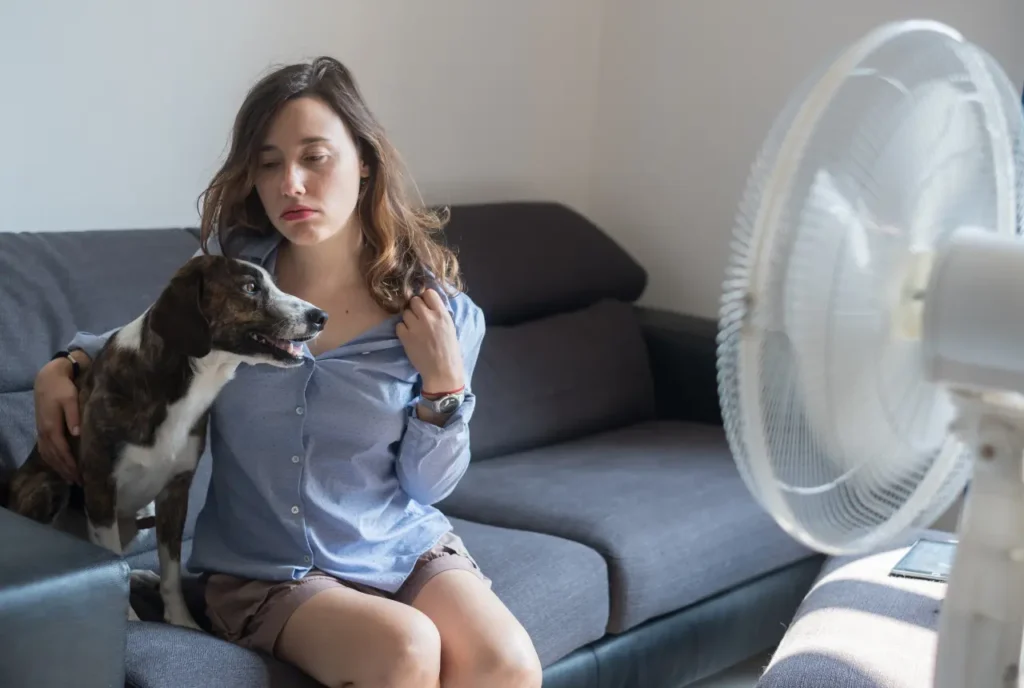
When it gets hot outside, pets can easily get too warm, which can lead to serious health problems like heatstroke and dehydration. It’s really important to have ways to keep them cool and safe.
Why Overheating Is Dangerous:
Pets can overheat fast, and it can be really serious. Look out for signs like heavy panting, acting tired, drooling a lot, or a faster heartbeat.
Tips for Keeping Pets Cool Inside
Air Conditioning: Keep your home cool with AC. Make sure your pets can go to cooler rooms when it’s really hot.
Fans: Fans can help keep the air moving and make a nice breeze.
Cooling Mats: These mats are made to soak up heat and keep your pets cool.
Staying Hydrated and Taking It Easy:
Always have fresh water available for your pets. Encourage them to drink to stay hydrated. Try not to do too much activity when it’s hottest.
Ways to Keep Outdoor Pets Cool:
Shaded Spots: Make sure there are places outside where pets can rest out of the sun.
Kiddie Pools: Fill a shallow pool with water for pets to cool down in. Keep an eye on them to make sure they’re safe.
Keep an eye on your pets for signs they’re too hot, and act fast if you see any. These tips will help you keep your pets cool and comfy during the summer, and keep them healthy and happy.
6. Indoor Dog Potty Options
Indoor dog potty systems offer convenience and flexibility for pet owners, particularly those living in apartments or with limited outdoor access. These systems help maintain a clean living environment while providing an appropriate place for your dog to relieve themselves.
There are several types of indoor dog potty systems to consider:
Grass Pads: These pads mimic the feel of real grass and are suitable for dogs who are used to outdoor potty breaks. They provide a natural feel and are relatively easy to clean, but they may require replacement and can be messy.
Litter Boxes: Similar to those used by cats, litter boxes can be filled with a special dog litter or pellets. They offer easy cleanup and are a familiar concept for many dogs, but they may track litter outside the box and could have an odor.
Pee Pads: Available in disposable or washable options, pee pads are absorbent mats that can be placed in a designated area. They provide convenience and are easy to clean, but they may pose training challenges and involve ongoing cost.
Factors to consider when choosing an indoor dog potty system include the size of your dog and available space, ease of training, maintenance requirements, and your dog’s preferences.
Training Tips:
Consistency: Establish a routine and stick to it.
Positive Reinforcement: Reward your dog for using the indoor potty correctly.
Patience: Be patient during the training process, as accidents may happen.
Transitioning: If transitioning from outdoor to indoor potty, gradually decrease outdoor access.
By choosing the right indoor dog potty system and employing effective training methods, you can provide a convenient and hygienic solution for your dog’s potty needs, regardless of your living situation.
7. The Importance of Cat Scratching Posts

Cat scratching posts are crucial for meeting your cat’s natural instincts and safeguarding your furniture. Scratching is normal behavior for cats, helping them shed old claw sheaths, stretch their muscles, and mark their territory with scent glands in their paws. By providing scratching posts, you give your cat a proper place to scratch, preventing them from damaging your furniture, carpets, and curtains.
There are various types of scratching posts to consider. Vertical posts allow cats to fully stretch and are often covered in sisal rope or carpet. Horizontal posts are closer to the ground and are preferred by cats who like to scratch horizontally. Cats are attracted to sisal rope posts because of their texture, which is ideal for clawing and stretching. Cardboard scratchers are inexpensive and come in different shapes and sizes, appealing to cats who enjoy scratching cardboard.
The placement and height of scratching posts are important considerations. Place them in areas where your cat likes to scratch, such as near their favorite resting spots or along common travel routes. Posts should be tall enough for your cat to stretch fully, allowing for a satisfying scratch.
By providing the right scratching posts, you can redirect your cat’s scratching behavior away from your furniture and promote their physical and mental well-being.
8. Choosing the Proper Litter Box Location

Choosing the right location for your cat’s litter box is vital for their comfort and well-being. It should provide a balance of privacy and accessibility, ensuring your cat feels safe and can easily access their litter box.
Consider these factors when selecting a spot for the litter box:
Cats prefer quiet, secluded areas for their litter boxes, away from busy spots and noisy appliances. This helps them feel secure while they do their business.
Make sure the litter box is easily accessible for your cat at all times. Avoid placing it where there are obstacles that could block their way.
Keep the litter box away from your cat’s food and water bowls. This helps maintain hygiene and prevents any accidental contamination.
There are different types of litter box setups to choose from:
Covered boxes offer privacy and help contain odors, but some cats may feel a bit closed in.
Open boxes are easy to access and provide ventilation, though they may not offer as much privacy or odor control.
No matter the type of litter box, cleanliness is key. Regularly scoop out waste and thoroughly clean the box to prevent odors and encourage your cat to use it.
If you have more than one cat, it’s a good idea to have multiple litter boxes. This can prevent conflicts over territory and ensure each cat has access to a clean spot when they need it.
By carefully choosing the location, and type, and keeping the litter box clean, you can create a comfortable and hygienic environment that encourages your cat to use it properly and supports their overall well-being.
9. Pet Hair Removal Tips and Tricks
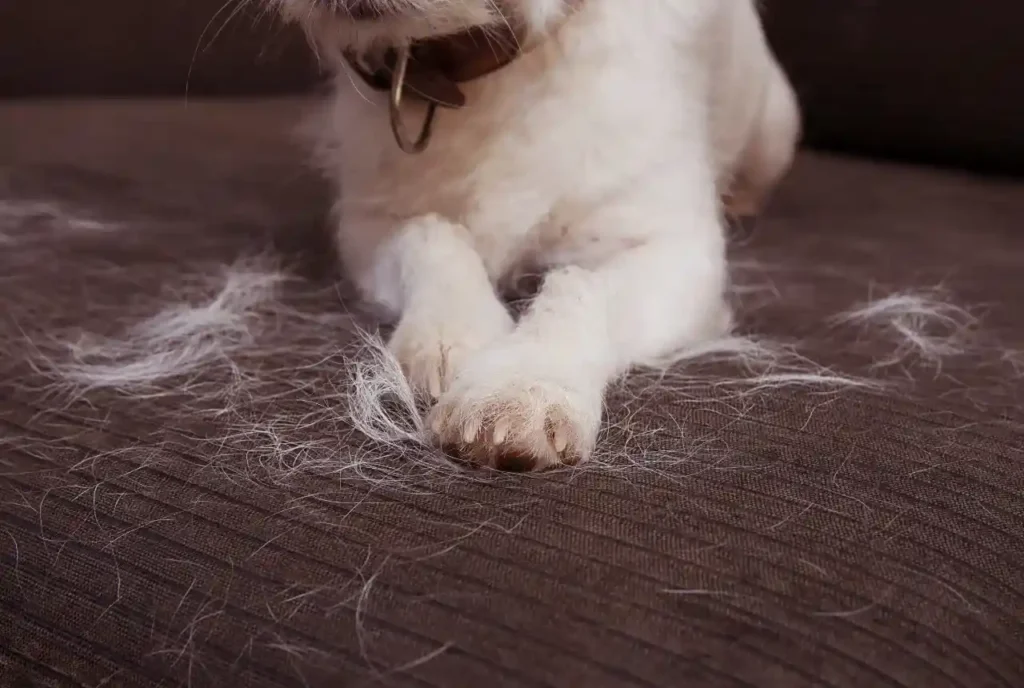
Dealing with pet hair can feel like a constant battle, but keeping your home clean is crucial for a healthy and allergen-free environment.
When it comes to removing pet hair from different surfaces:
For Furniture:
To get rid of pet hair on your furniture, use a vacuum cleaner with a pet hair attachment or a lint roller. Another effective method is to brush the furniture with a furniture brush or a rubber glove.
On Carpets:
Vacuum your carpets frequently, especially in high-traffic areas where pet hair tends to accumulate. It’s helpful to use a vacuum cleaner specifically designed for pet hair removal.
On Clothes:
To remove pet hair from your clothes, use a lint roller or a clothes brush. You can also try using dryer sheets or dampening your hands with water and running them over your clothes.
Different tools for pet hair removal include:
Vacuum cleaners with pet hair attachments, are designed to lift and remove pet hair from various surfaces.
Lint rollers, are perfect for quickly removing pet hair from clothing and fabric surfaces.
Furniture brushes, which gather and lift pet hair from furniture and bedding.
Regular grooming is key to managing shedding:
Regularly grooming your pet helps minimize shedding by removing loose fur before it ends up all over your home. Make sure to brush your pet’s coat regularly, especially if they have long hair or shed a lot. This not only reduces loose hair but also keeps your pet’s skin healthy and their coat shiny.
By following these tips and regularly grooming your pet, you can effectively manage pet hair in your home and create a more comfortable living environment for both you and your furry companion.
10. Creating a Pet-Friendly Yard
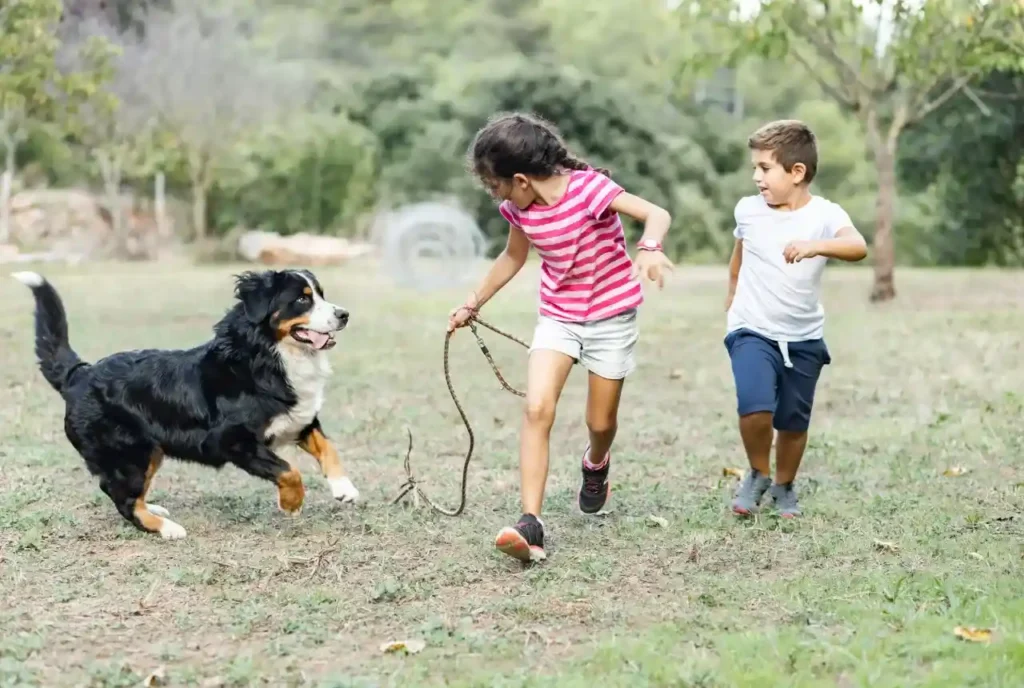
Dealing with pet hair can be a constant challenge, but regular cleaning is essential for maintaining a healthy and allergen-free environment in your home.
Pet hair removal tips for different surfaces
Furniture: Use a vacuum cleaner with a pet hair attachment or a lint roller to remove hair from upholstery. Brushing furniture with a furniture brush or rubber glove can also be effective.
Carpets: Vacuum carpets frequently, focusing on high-traffic areas where pet hair tends to accumulate. Use a vacuum cleaner designed for pet hair removal.
Clothes: Use a lint roller or a clothes brush to remove pet hair from clothing. Alternatively, try using dryer sheets or dampening your hands with water and running them over your clothes.
Different pet hair removal tools:
Vacuum cleaners with pet hair attachments: These are specifically designed to lift and remove pet hair from various surfaces.
Lint rollers: Perfect for quickly removing pet hair from clothing and other fabric surfaces.
Furniture brushes: These tools are designed to gather and lift pet hair from furniture and bedding.
Regular grooming is essential for managing shedding:
Regular grooming helps to minimize shedding by removing loose fur before it can fall out around your home. Brush your pet’s coat regularly, especially if they have long hair or are heavy shedders. This practice not only reduces the amount of loose hair but also promotes healthier skin and a shiny coat for your pet.
By following these tips and regularly grooming your pet, you can effectively manage pet hair in your home and create a more comfortable living environment for both you and your furry companion.
Conclusion
In conclusion, creating a pet-friendly home is all about thoughtful planning and understanding the needs of your furry friends. By ensuring safety, comfort, and engagement through pet-proofing, easy-to-clean surfaces, cozy resting spots, and plenty of toys, you create a harmonious environment where your pets can thrive.
Regular grooming, proper litter box placement, pet-safe plants, durable furniture, and a calm atmosphere further enhance their well-being. With these simple steps, you can make your home a loving, secure, and enjoyable space for both your pets and your family.







